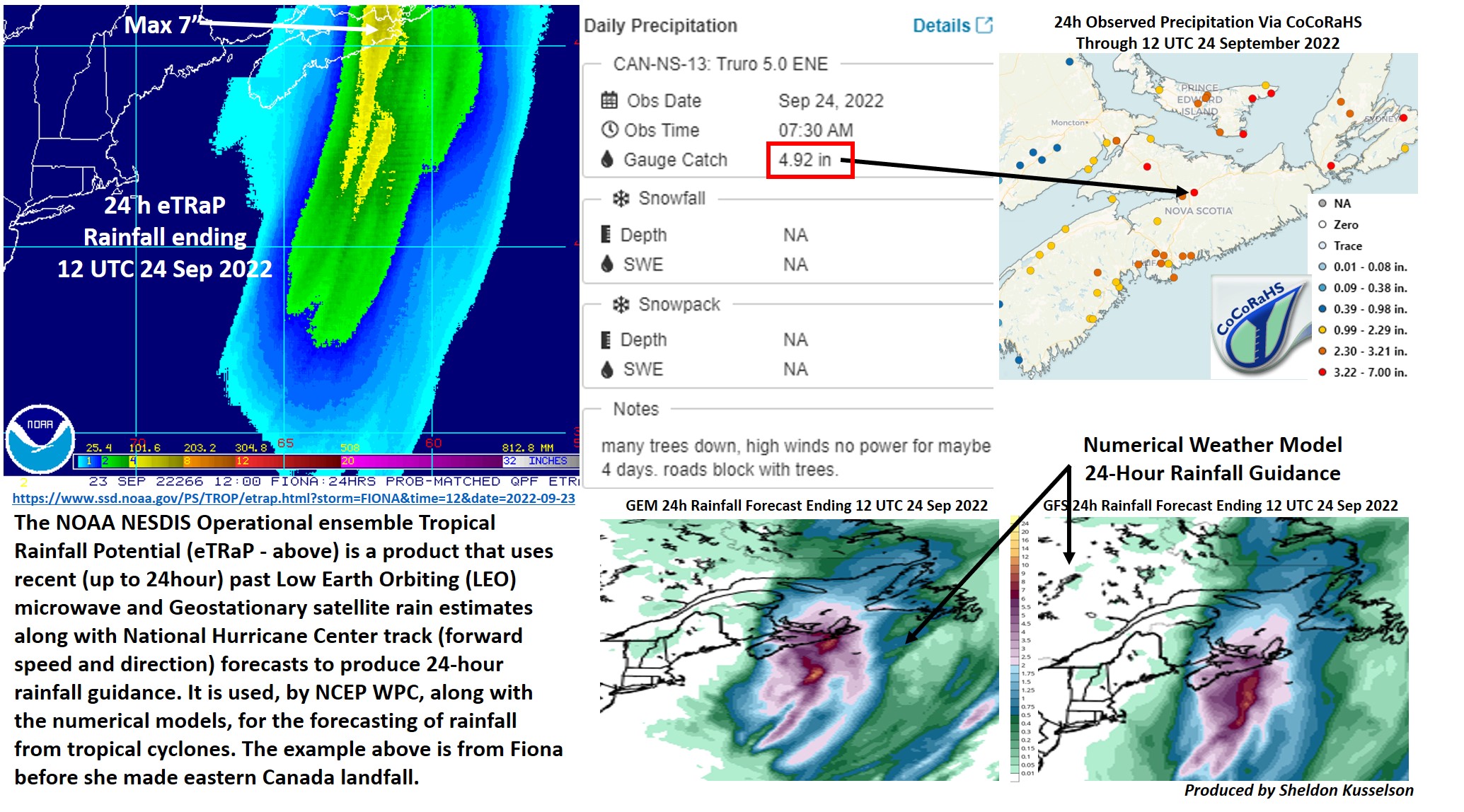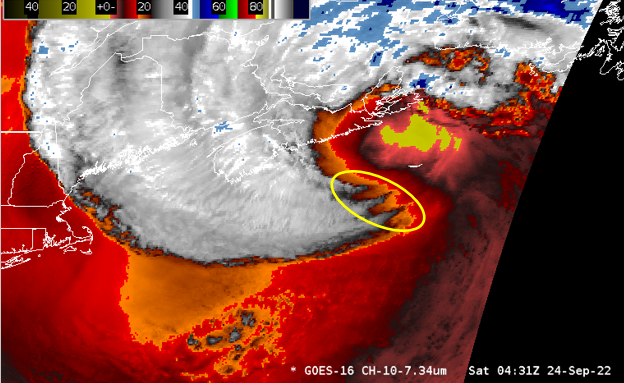Extra-tropical transition of Tropical Cyclone Fiona
By Dan Bikos and Sheldon Kusselson
Hurricane Fiona underwent a transition from a tropical cyclone to an extra-tropical cyclone on 23-24 September 2022. The resulting extra-tropical cyclone was very intense and led to significant storm surge, wind damage and heavy rain in southeast Canada centered on Nova Scotia.
The Advected Layer Precipitable Water loop does an excellent job of capturing the transition to an extra-tropical cyclone. The lower left panel displays the precipitable water in the 700-500 mb layer. Note the dry air mass that is initially southwest of the surface low, wrap cyclonically around the low. This dry air intrusion at mid-levels is characteristic of extra-tropical cyclogenesis as the dry conveyor belt (also called dry slot) develops and intensifies. The ALPW loop also shows the abundant low-level moisture transported northward ahead of the surface low towards Nova Scotia, contributing to the heavy rain event.
For another perspective of the extra-tropical cyclogenesis event, we turn to the 3 water vapor bands along with the air mass RGB product. The warmer brightness temperatures observed in the water vapor bands are initially southwest of the surface low and wrap cyclonically around the low. This is coincident with the dry air intrusion with the dry air in the ALPW 700-500 mb layer since this is a subsidence signature.
One of the features we see in the water vapor imagery are these multiple lines indicated by the yellow oval shown below:
This is a sting jet at low-levels and is commonly observed with very strong winds at the surface.
Additional information on sting jets


